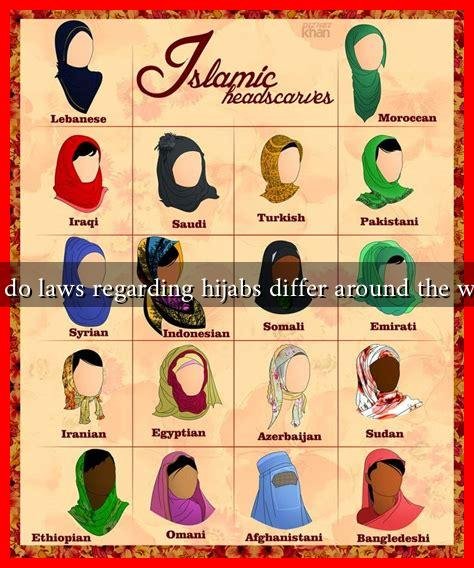-
Table of Contents
How Do Laws Regarding Hijabs Differ Around the World?
The hijab, a traditional headscarf worn by many Muslim women, has become a symbol of both faith and identity. However, the legal status of wearing a hijab varies significantly across different countries, reflecting a complex interplay of cultural, religious, and political factors. This article explores how laws regarding hijabs differ around the world, highlighting key examples and the implications of these regulations.
The Spectrum of Acceptance
Globally, the acceptance and regulation of hijabs can be categorized into three main groups: permissive, restrictive, and prohibitive. Each category reflects the societal attitudes towards Islam and women’s rights in different regions.
- Permissive Countries: In many Muslim-majority countries, wearing a hijab is not only accepted but often encouraged. Countries like Saudi Arabia and Iran mandate the wearing of hijabs in public spaces.
- Restrictive Countries: Some nations allow the hijab but impose restrictions in certain contexts, such as in schools or government buildings. For instance, countries like Turkey and Tunisia have had fluctuating policies regarding hijabs in educational institutions.
- Prohibitive Countries: A few countries have outright bans on hijabs, viewing them as symbols of oppression. France is a notable example, where laws prohibit the wearing of conspicuous religious symbols, including hijabs, in public schools.
Case Studies of Hijab Laws
To better understand the global landscape of hijab laws, let’s examine specific case studies from various countries.
Saudi Arabia: A Mandate of Faith
In Saudi Arabia, the hijab is not just a personal choice but a legal requirement. Women are expected to wear an abaya (a loose-fitting cloak) and cover their hair in public. The enforcement of this law is strict, with religious police ensuring compliance. The consequences for not adhering to these laws can range from fines to imprisonment.
France: Secularism and the Hijab Ban
France’s approach to the hijab is rooted in its commitment to secularism. In 2004, the French government enacted a law prohibiting the wearing of conspicuous religious symbols in public schools. This law has sparked significant debate about religious freedom and women’s rights. Critics argue that it disproportionately affects Muslim women, while supporters claim it upholds the principles of secularism.
Turkey: A Changing Landscape
Turkey presents a unique case where hijab laws have evolved over time. Historically, the hijab was banned in public institutions, reflecting the country’s secular foundations. However, in recent years, the government has lifted many of these restrictions, allowing women to wear hijabs in schools and government offices. This shift has been met with mixed reactions, highlighting the ongoing tension between secularism and religious expression.
Statistics and Public Opinion
Public opinion on hijab laws varies widely. According to a 2019 Pew Research Center survey, attitudes towards the hijab differ significantly across regions:
- In the Middle East and North Africa, approximately 60% of Muslims believe that women should wear the hijab.
- In Western Europe, only about 20% of the population supports a ban on the hijab, indicating a more tolerant attitude towards religious expression.
These statistics underscore the importance of cultural context in shaping public opinion and legal frameworks regarding the hijab.
Conclusion: A Complex Tapestry of Beliefs and Laws
The laws surrounding hijabs around the world reflect a complex tapestry of beliefs, cultural practices, and political ideologies. From mandatory hijabs in Saudi Arabia to bans in France, the legal status of the hijab is a reflection of broader societal attitudes towards Islam and women’s rights. As global conversations about religious freedom and gender equality continue to evolve, the future of hijab laws will likely remain a contentious issue. Understanding these differences is crucial for fostering dialogue and promoting respect for diverse cultural practices.
For further reading on this topic, you can explore resources from the Pew Research Center and other scholarly articles that delve into the intersection of religion, culture, and law.

